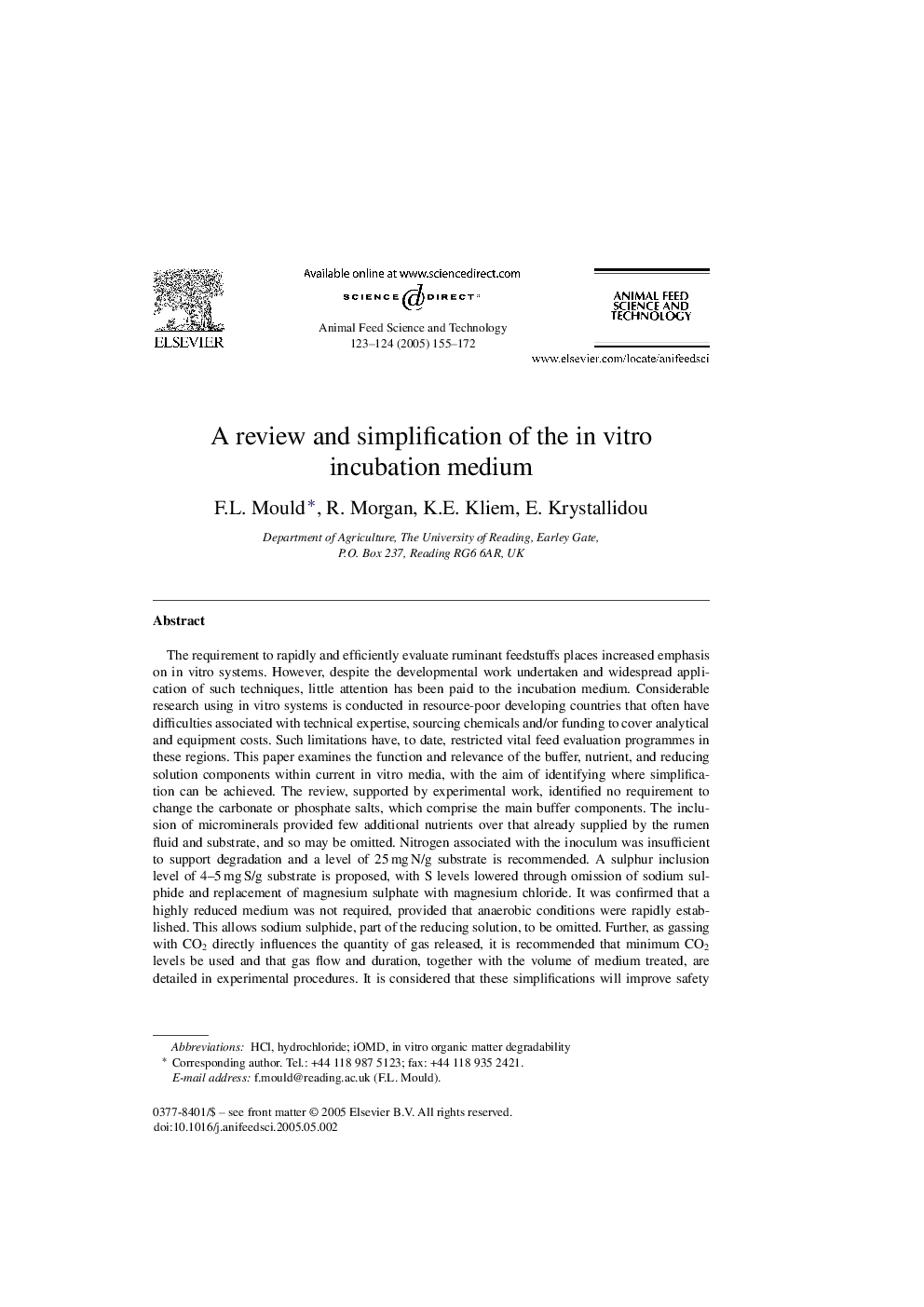| Article ID | Journal | Published Year | Pages | File Type |
|---|---|---|---|---|
| 9916608 | Animal Feed Science and Technology | 2005 | 18 Pages |
Abstract
The requirement to rapidly and efficiently evaluate ruminant feedstuffs places increased emphasis on in vitro systems. However, despite the developmental work undertaken and widespread application of such techniques, little attention has been paid to the incubation medium. Considerable research using in vitro systems is conducted in resource-poor developing countries that often have difficulties associated with technical expertise, sourcing chemicals and/or funding to cover analytical and equipment costs. Such limitations have, to date, restricted vital feed evaluation programmes in these regions. This paper examines the function and relevance of the buffer, nutrient, and reducing solution components within current in vitro media, with the aim of identifying where simplification can be achieved. The review, supported by experimental work, identified no requirement to change the carbonate or phosphate salts, which comprise the main buffer components. The inclusion of microminerals provided few additional nutrients over that already supplied by the rumen fluid and substrate, and so may be omitted. Nitrogen associated with the inoculum was insufficient to support degradation and a level of 25 mg N/g substrate is recommended. A sulphur inclusion level of 4-5 mg S/g substrate is proposed, with S levels lowered through omission of sodium sulphide and replacement of magnesium sulphate with magnesium chloride. It was confirmed that a highly reduced medium was not required, provided that anaerobic conditions were rapidly established. This allows sodium sulphide, part of the reducing solution, to be omitted. Further, as gassing with CO2 directly influences the quantity of gas released, it is recommended that minimum CO2 levels be used and that gas flow and duration, together with the volume of medium treated, are detailed in experimental procedures. It is considered that these simplifications will improve safety and reduce costs and problems associated with sourcing components, while maintaining analytical precision.
Related Topics
Life Sciences
Agricultural and Biological Sciences
Animal Science and Zoology
Authors
F.L. Mould, R. Morgan, K.E. Kliem, E. Krystallidou,
